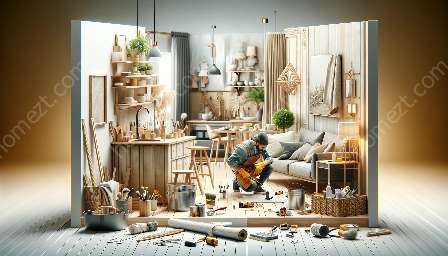DIY home repairs are a great way to save money while improving your living space. Whether you're a seasoned DIY enthusiast or just starting out, there are plenty of home repair projects that you can tackle with the right guidance and tools. In this comprehensive guide, we'll provide step-by-step instructions, tips, and ideas for a variety of home improvement projects. From fixing leaky faucets to repairing drywall, you'll find everything you need to know to confidently take on DIY home repairs.
Understanding the Basics of DIY Home Repairs
Before diving into specific projects, it's essential to understand the basics of DIY home repairs. Safety should always be the top priority, so be sure to familiarize yourself with proper safety precautions and the necessary tools for each project. Additionally, gaining a good understanding of common home repair materials, such as drywall, wood, and plumbing fixtures, will set you up for success.
1. Essential Tools
Start by gathering the essential tools that will come in handy for a wide range of home repair projects. These may include:
- Screwdrivers (both flathead and Phillips)
- Hammer
- Tape measure
- Adjustable wrench
- Pliers
- Utility knife
- Power drill
2. Plumbing Repairs
Common plumbing issues in a home can often be addressed with the right tools and techniques. Step-by-step instructions for handling leaky faucets, unclogging drains, and fixing running toilets are essential skills for any DIY homeowner.
- Leaky Faucets: Begin by turning off the water supply, then disassemble the faucet to locate the source of the leak. Replace the necessary parts and reassemble the faucet, checking for any remaining leaks.
- Unclogging Drains: Use a drain snake or a plunger to dislodge any blockages in the drain. If the issue persists, consider using a drain-cleaning solution or consulting a professional.
- Running Toilets: Identify the cause of the continuous running and replace the faulty parts inside the toilet tank to restore proper functionality.
3. Wall and Ceiling Repairs
From minor drywall damage to flaking paint, various issues with walls and ceilings can be tackled with the right techniques. Patching small holes, repairing drywall cracks, and repainting surfaces can dramatically improve the appearance of a room.
- Patching Holes: Use a joint compound and a putty knife to patch small holes or dents in the wall, ensuring a smooth finish for painting.
- Drywall Cracks: Apply a mesh tape over the crack and use joint compound to fill and smooth the surface before painting.
- Repainting: Choose the right paint color and type to match the existing wall or ceiling, then apply a fresh coat for a seamless finish.
Many electrical issues can be fixed without calling an electrician. Whether it's replacing a light fixture or installing a new outlet, basic electrical repairs can be done safely with proper precautions and knowledge.
- Replacing Light Fixtures: Turn off the power, remove the old fixture, and install the new one according to the manufacturer's instructions.
- Installing Outlets: Identify the type of outlet needed, shut off the power, and carefully replace the old outlet with a new one, ensuring proper connections and safety.











